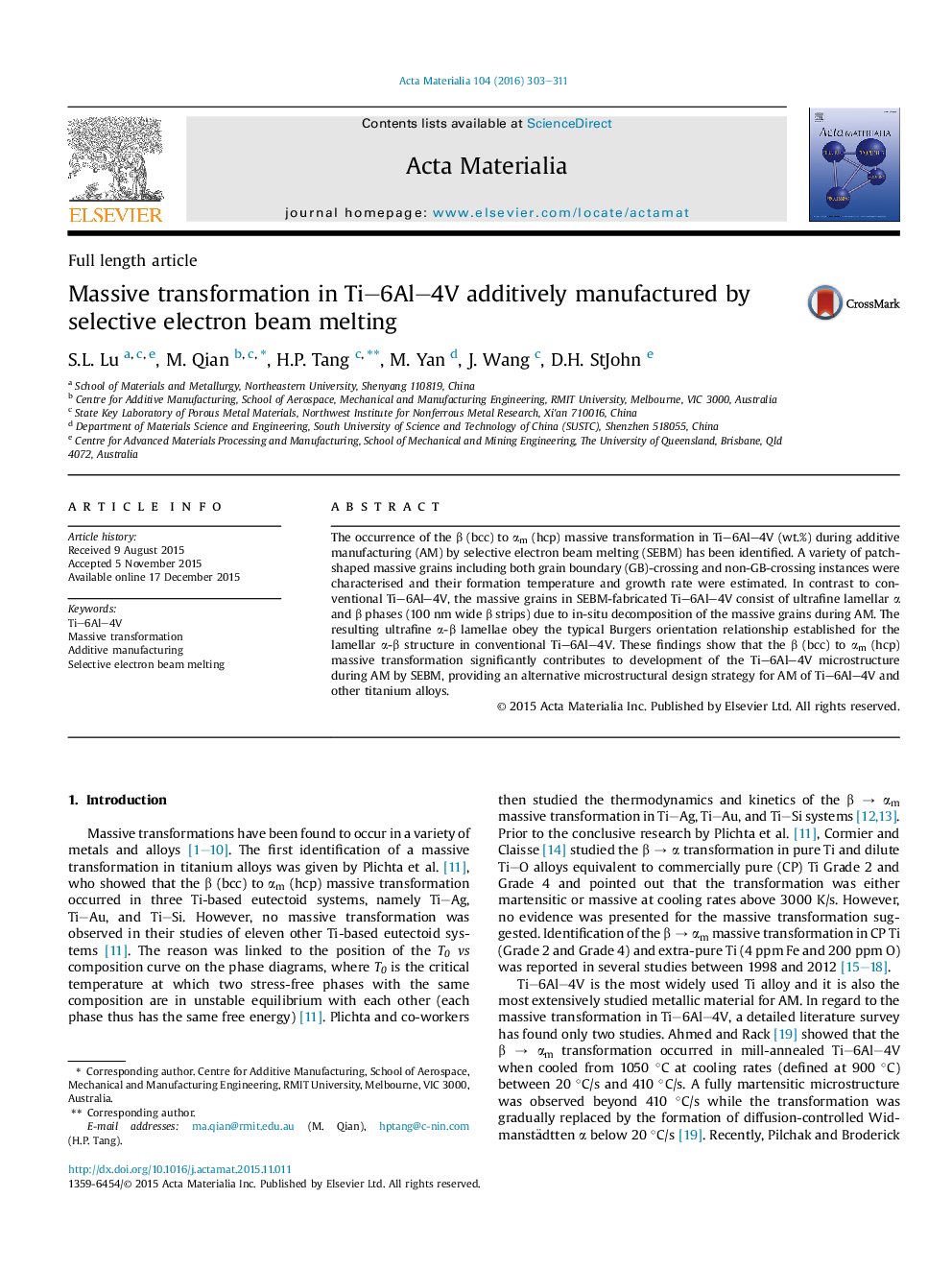| Article ID | Journal | Published Year | Pages | File Type |
|---|---|---|---|---|
| 1445171 | Acta Materialia | 2016 | 9 Pages |
The occurrence of the β (bcc) to αm (hcp) massive transformation in Ti–6Al–4V (wt.%) during additive manufacturing (AM) by selective electron beam melting (SEBM) has been identified. A variety of patch-shaped massive grains including both grain boundary (GB)-crossing and non-GB-crossing instances were characterised and their formation temperature and growth rate were estimated. In contrast to conventional Ti–6Al–4V, the massive grains in SEBM-fabricated Ti–6Al–4V consist of ultrafine lamellar α and β phases (100 nm wide β strips) due to in-situ decomposition of the massive grains during AM. The resulting ultrafine α-β lamellae obey the typical Burgers orientation relationship established for the lamellar α-β structure in conventional Ti–6Al–4V. These findings show that the β (bcc) to αm (hcp) massive transformation significantly contributes to development of the Ti–6Al–4V microstructure during AM by SEBM, providing an alternative microstructural design strategy for AM of Ti–6Al–4V and other titanium alloys.
Graphical abstract(a) EBSD colour inverse pole figure (IPF) showing both non-GB-crossing (i.e.③) and GB-crossing (i.e. ④ and ⑤) massive phase grains. (b) Multiple-spot TEM BF image showing the ultra-fine α-β microstructures within the massive phase grain. The inset in (a) is an EBSD band-contrast map showing the original prior-β GB. The side arrow in (a) represents the SEBM building direction.Figure optionsDownload full-size imageDownload high-quality image (559 K)Download as PowerPoint slide
